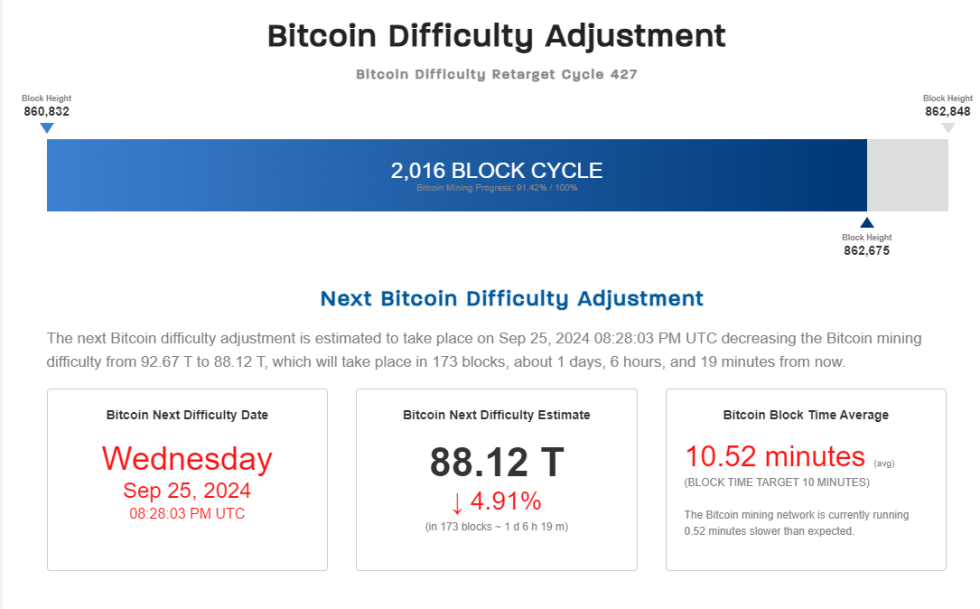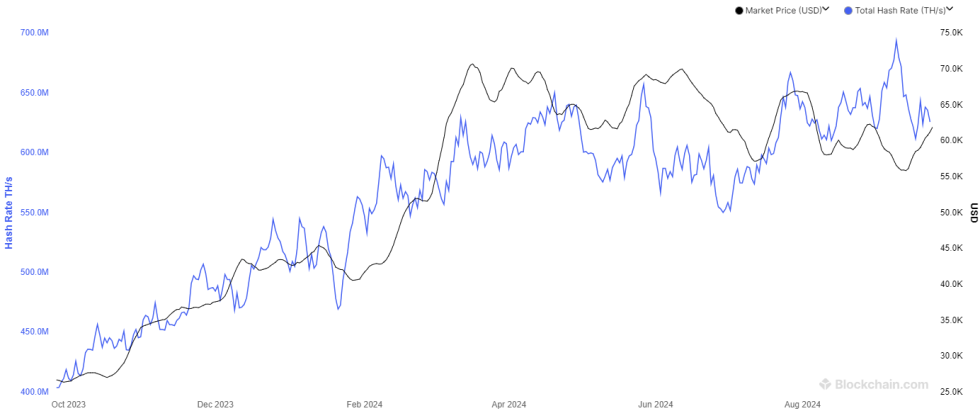On-chain data suggests that Bitcoin mining difficulty is expected to decrease by around 5% in the next network adjustment, a change that miners would welcome.
Bitcoin network block time has been slower than normal recently
“Mining Difficulty” refers to the difficulty that miners would have in mining blocks on the BTC network. The goal of Difficulty is to ensure that the total time between each block being added to the blockchain, called block time, remains constant for approximately 10 minutes.
Whenever the miners’ pace deviates from this value, the network adjusts its difficulty to bring the block time back to the standard value. These adjustments happen approximately every two weeks, with the last one scheduled to go live tomorrow.
As CoinWarz data shows, miners have not been able to mine at a rate of one block every 10 minutes for the past two weeks.

Looks like the Difficulty is set to drop tomorrow | Source: CoinWarz
With an average block time of 10.52 minutes, the Bitcoin blockchain is running slower than expected, so the network will reduce its difficulty by 4.91% tomorrow. With a lower difficulty, miners should have an easier time finding blocks and getting the chain back up to speed.
As for why miners have been slow recently, the answer lies in the trend in mining hash rate, a measure of the total amount of computing power miners have connected to the BTC blockchain.
Below is a chart from Blockchain.com, which shows data over the past year for the 7-day average of this metric.

The trend in the BTC Hashrate over the last twelve months | Source: Blockchain.com
As the chart shows, Bitcoin’s 7-day average mining hash rate had set a new record earlier in the month, but since then the indicator’s value has declined sharply.
With much less computing power at their disposal, miners have naturally become slower at their tasks recently, forcing the network to decrease its difficulty. If they had instead increased their power during this period, the difficulty would be headed for another increase.
The reduced difficulty will be refreshing for miners, as block time is directly tied to their revenue. Miners earn their revenue from the block reward, a combination of the block subsidy and transaction fees, which they receive as compensation for solving blocks.
The faster miners can go through blocks, the more revenue they can generate. Since the network tries to limit block times to around 10 minutes, there is a limit to how much revenue miners can earn.
Even if miners double their computing power overnight, they can only save at least twice as much time for a few weeks, before the Bitcoin blockchain kicks them back into normal mode by massively increasing the difficulty.
This is the main reason why difficulty exists, so that miners cannot continue to increase their power indefinitely to process blocks faster. Without this feature, cryptocurrency would easily fall prey to inflation since the block subsidy, the main component of the block reward, is how new coins are “minted.”
BTC Price
At the time of writing, Bitcoin is hovering around $63,400, up 4% over the past seven days.
Looks like the price of the coin has been showing stale action recently | Source: BTCUSDT on TradingView
Featured image by Dall-E, Blockchain.com, CoinWarz.com, chart by TradingView.com

